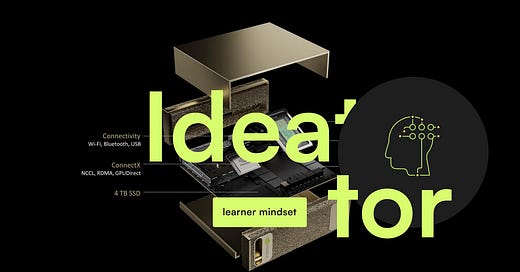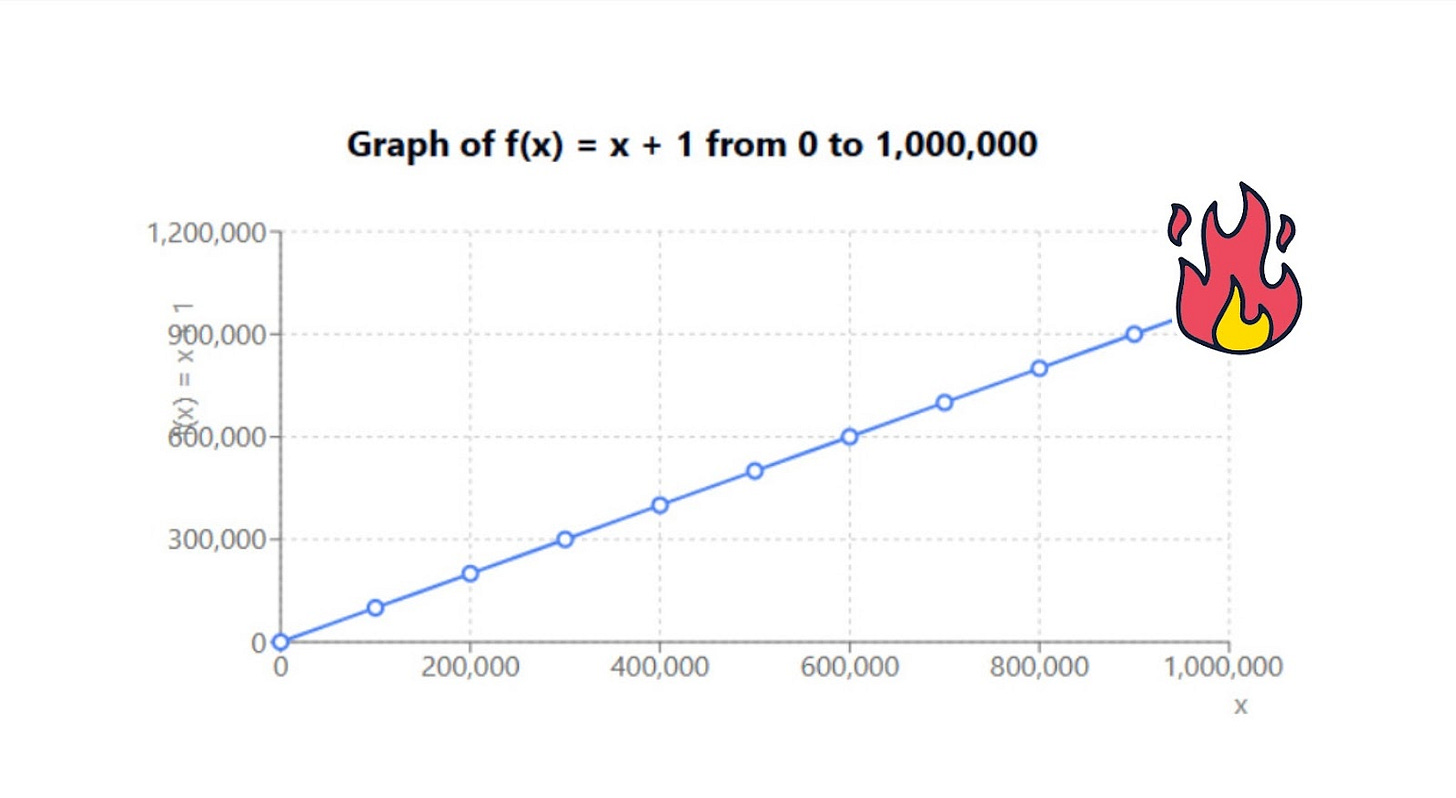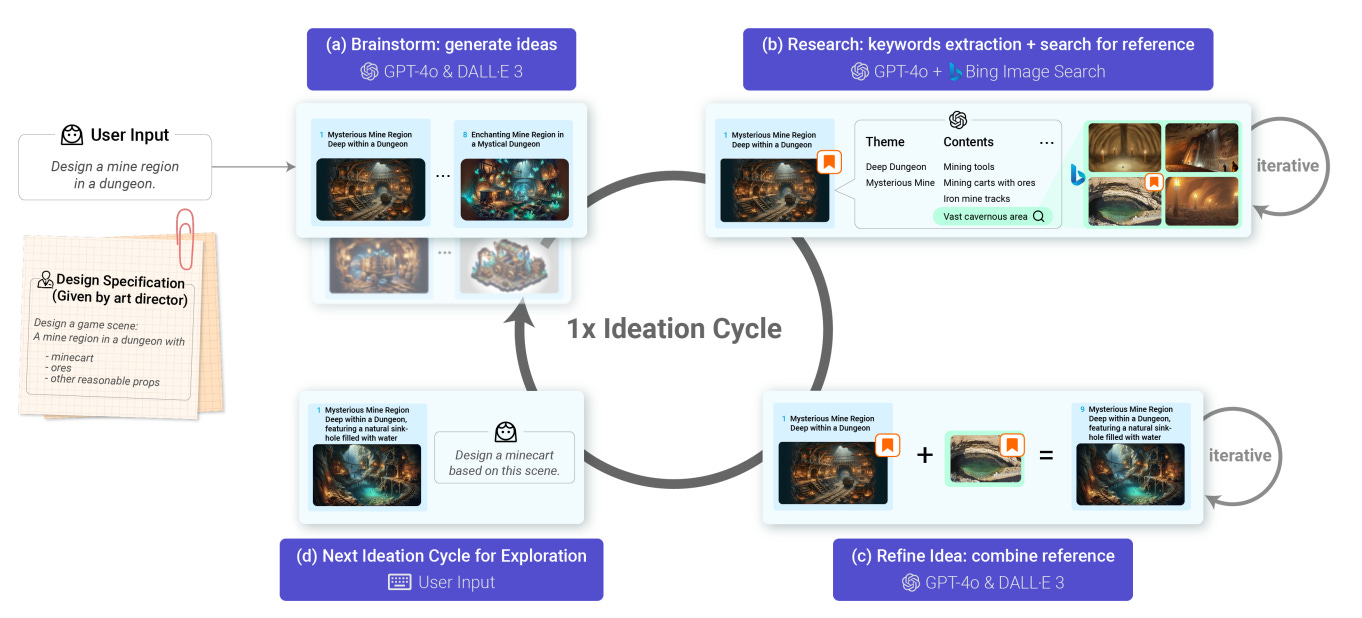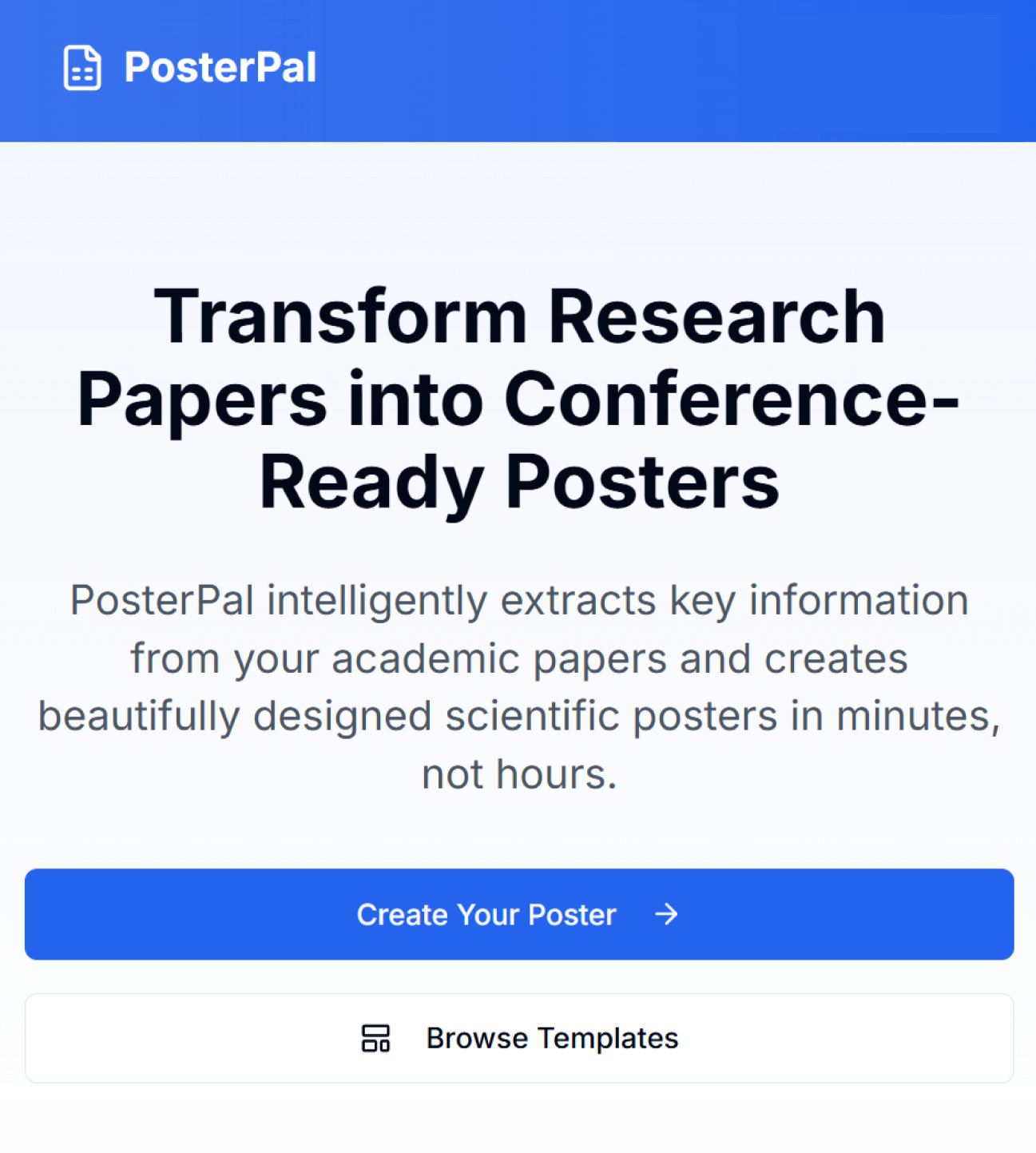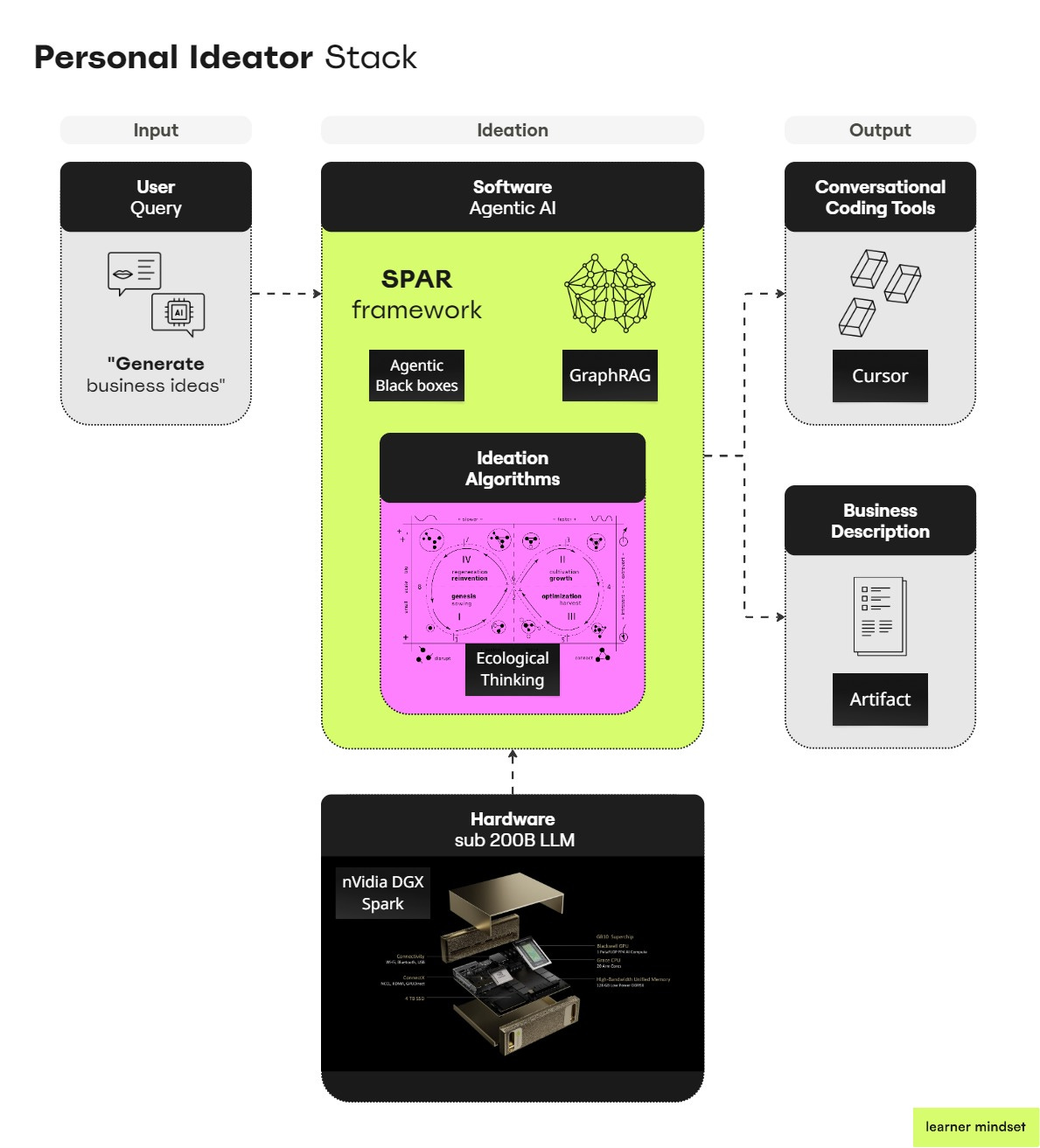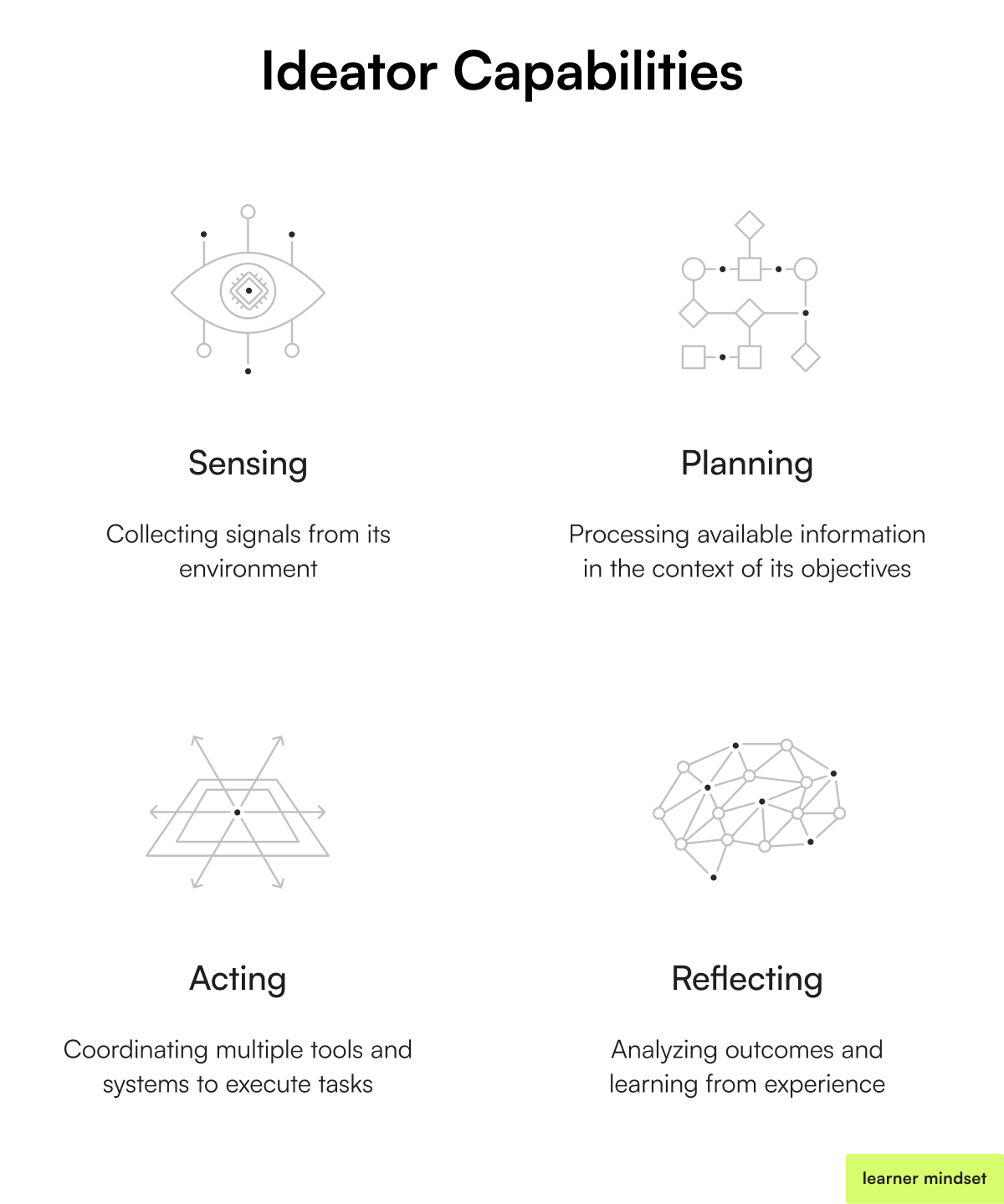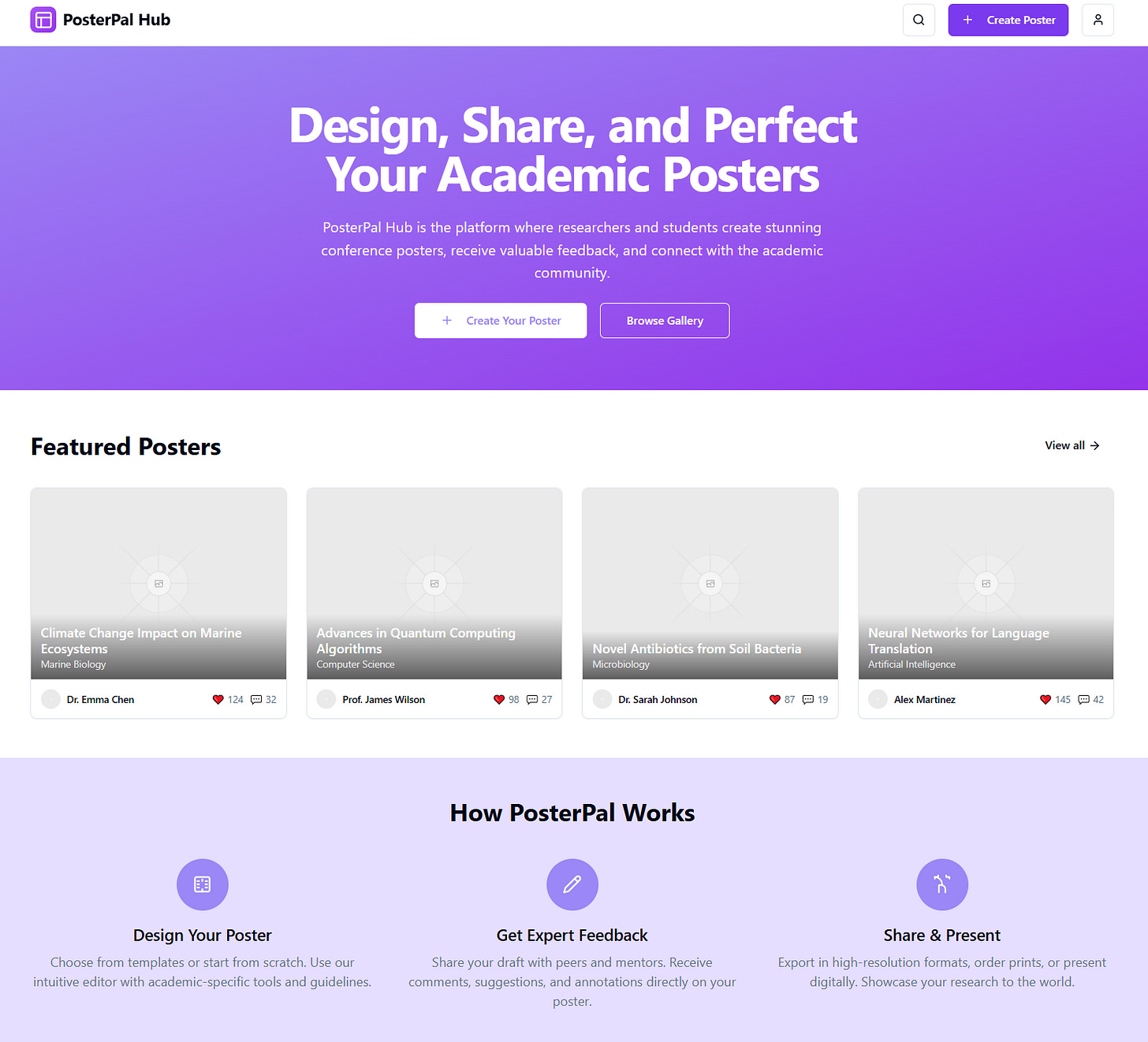Worthless to Priceless: The Hidden Economy of $1 Ideas
How machine-evolved ideation transforms invention from scarcity to abundance
👋 Hi frens!
Today we dive into a trifecta of philosophy, business, and technology. Sprinkled with a bit of design and futuristic thinking on top 🍰😄
Let’s jump in!
Tl;dr:
They say "an idea is worth $1." Taking this literally — what if we could generate a million ideas? Enter ideators – AI systems I'm exploring that don't just create ideas but evolve them through digital natural selection.
I have been thinking about ideas a lot recently.
In design, product, and business circles there’s a saying: that an idea is worth $1. The saying, positions ideas as almost worthless entities. And it often goes in pair with yet another statement – that the execution is king. It seems that ideas are worthless without the execution element. I would like to challenge that.
When we look closer at the saying that ideas are worth $1, we can easily glance over something subtle yet profound. Read that again – ideas are worth $1.
The statement itself points out the fact that ideas are not worth nothing! After all, $1 is not nothing, right? (I know some Austrian economists would argue, but that’s another matter 😉).
Let’s pull on that string a little bit more. And imagine constantly adding the non-nothing to non-nothing. After enough repetitions, we must eventually arrive at the some-thing some-thing.
And this is huge!
Adding little non-nothings is like observing a series of tiny sparks that eventually start a prairie fire. Or take a visual graph representing a process of adding $1 for 999.999.999 times, up to one million.
Even though we started with bucks and sparks, given enough time we eventually get to see something quite substantial.
But let’s not kid ourselves. 99% of the above graph is a boring grind. There’s nothing particularly interesting in incrementally creating a big pile of almost nothing.
It’s like watching paint dry.
You will either flip the table once you realize the futility of this task, or you will bore yourself to death if you are the more persistent type.
Humans don’t particularly enjoy performing repetitive, tedious tasks. No sane human would willingly pursue 1kk ideas, even if that amounted to one million dollars of value at the end.
Humans hate the grind.
But machines, well…
Machines don’t mind the grind 😁
Machines don’t mind
Machines will help us with the tedious ideation processes. After all, they are perfectly predisposed to take such mundane tasks from our plate. I believe machines, although lacking the capacity for human-like creativity – can significantly augment human creative endeavors. It boils down to the way we set them up.
But there’s more.
Remember our task to get from 0 to 1 million? Such tasks, which net valuable results from repetitive, incremental processes – can be scaled indefinitely, and are ripe for automation.
And boy do we humans know how to automate!
We are already creating systems that ideate with us. What if we created a system that ideates for us?
Grinding ideas
Humans have successfully outsourced tedious calculations to mechanical calculators in the past (XVII, Wilhelm Schickard and Blaise Pascal). We — the contemporary humans, can begin to outsource repetitive ideation tasks to ideators. I will show you how to build one in just a second.
But before we go there. You might ask a totally sensible question – How is all that relevant for you and me?
Remember — ideas are worth $1. If we take this saying in a literal sense and indulge it to its extreme — we arrive with an interesting realization. The realization is that having 100 ideas every day for a month would net you $3000.
That’s not a bad salary if you ask me.
What’s more, I believe all this is achievable today — in the age of the thinking machines.
We are entering an era of idea abundance. Where coming up with thousands of non-zero-value ideas in less than 10 days is totally achievable. Sure, some of the ideas might be poor or simply dead-ends – but in an endless sea, if you have a wide enough net, you can reasonably hope to catch a few golden trout.
This is an opportunity worth taking advantage of.
And it boils down to cleverly outsourcing the grind of sieving sands to the thinking machine.
From $1 ideas to working prototypes: PosterPal
To illustrate how even simple ideas can evolve into valuable concepts through systematic development, let me introduce a concept I've been working on: PosterPal.
PosterPal is an interactive online platform where academics can design, share, and receive feedback on conference posters. The platform integrates templates, scientific design guides, and printing services, fostering a creative community around academic presentation.
This concept might seem straightforward – perhaps worth that proverbial $1 – but as we'll see throughout this article, the systematic approach to developing and refining such ideas can transform them into something much more valuable.
I'll reference this example as we explore different components of the ideator system, showing how each element contributes to evolving a simple concept into a comprehensive solution.
What’s an Ideator
What is an ideator?
The main principle that underlines them is very simple. To appreciate it fully, let’s use a common analogy to a calculator. If the calculators’ main function is to calculate, the ideators’ key function is to… ideate 😁.
Obviously, there is more to ideating and to ideators than meets the eye.
Ideators represent a fundamental shift in our relationship with creativity itself, transforming us from idea generators to idea curators
Going one step deeper into understanding these devices — ideators are the programmable tools we will use to generate, grow and harvest ideas.
You first need to configure them. Then, you set them up to complete a particular job or a task. Setting up an ideator is similar to setting up a crockpot for cooking a delicious stew overnight, or setting up a rendering which might take hours or even days if you were producing a 3D Pixar movie for example.
Once the ideator is done — you receive a result. The result in our case might be a digitally curated list of business ideas to try out, or optimization ideas for our ever-growing digital lives.
The opportunities are endless.
And if we consider the abundance of tools builders can use now, and their willingness to experiment with LLMs, building an ideator is not only possible — it’s plausible. Let’s see how you can build one for yourself.
How to build an Ideator
Building a well-performing ideator is an endeavor that requires a clever combination of hardware and software. But that’s not all.
You also need an artisan mindset.
Designing an ideator to output valuable ideas is just as much an exercise in engineering, as it is a delicate art.
Identifying what makes an idea good or bad requires a good sense of taste from the supervisor. This means that when initially calibrating the machine — the outputs need to pass an array of tests. One of them being the human smell test for example. This is obviously highly subjective, based on prior experience with smelling lots of ideas, etc.
The art aspect is vast and ripe for tweaking. On the other hand, the engineering aspect is more concrete. So let’s stick to it for now.
Knowing how to connect the wires is one thing, connecting them in a way that renders consistently great results is another.
Ideator architecture
The ideal ideator stack for personal use leverages nVidia's DGX Spark for its raw computational power, paired with Agentic AI running Ecological Algorithms that mimic natural selection processes for ideas.
This hardware-software synergy makes perfect sense because ideation at scale requires both massive parallel processing capabilities and sophisticated algorithms that can evolve concepts through multiple generations.
Agentic systems
I've been fascinated by how AI agents operate, and I've found the SPAR framework – sense, plan, act, reflect – incredibly useful for understanding their capabilities.
What makes this framework so compelling is how closely it mirrors our own human cognitive processes when developing ideas like PosterPal.
Sensing
Imagine thousands of research assistants working while you sleep, scanning academic publications, conference websites, and social media discussions about scientific conference posters. An agent might detect that early-career researchers consistently struggle with poster design principles, while established scientists complain about limited visibility of their work in business or media circles – a pattern that might take human researchers weeks to discover.
Planning
Rather than jumping to solutions, the AI maps strategic approaches: discipline-specific templates, collaborative feedback mechanisms, digital distribution channels, and integration with academic networking platforms. This happens at a scale and speed no human team could match.
Acting
Ideators don't just generate ideas – they test them by creating mockup landing pages, drafting user flows, or simulating user acquisition strategies. For PosterPal, agents could develop pricing structures for printing services and test various community engagement features to determine which would create the strongest network effects.
Reflecting
After testing, the agent evaluates results against success criteria and refines the idea accordingly. What took me years to learn – that failure contains the seeds of future success – these agents do automatically with each cycle.
For example, the system might discover that academics value peer feedback more than template variety, refining PosterPal's features accordingly.
What truly excites me about ideators is how these four capabilities create a continuous improvement loop. Each iteration of PosterPal wouldn't be static – it would evolve through multiple cycles, getting stronger with each refinement.
GraphRAG
One of the biggest limitations to harnessing the ideation capabilities of our ideator is the very same thing that makes them so powerful.
The LLMs.
Or rather, the peculiar nature of LLM databases. You see, LLMs have quasi-knowledge databases that are „strange and imperfect”.
What does it mean in practice?
It means these systems, in their purest, out-of-the-box form are unable to infer relationships. And inferring relationships is the cornerstone of any creative endeavor.
Not having the capacity to infer relationships is an insta-kill ☠ for any serious ideation applications.

Is all hope lost then?
Not necessarily — enter the GraphRAG 💪.
GraphRAG is like giving an AI both a detailed map of how information is connected and the ability to navigate that map, allowing it to discover non-obvious relationships between concepts that might spark innovative ideas at unexpected intersections.
PosterPal and GraphRAG in action
When developing PosterPal, I leveraged GraphRAG to analyze the "conference poster" keyword, revealing connections traditional research would miss.
Rather than just finding isolated search terms, the system mapped an entire ecosystem of related needs: researchers struggling with design principles and institutions seeking greater visibility for their research.
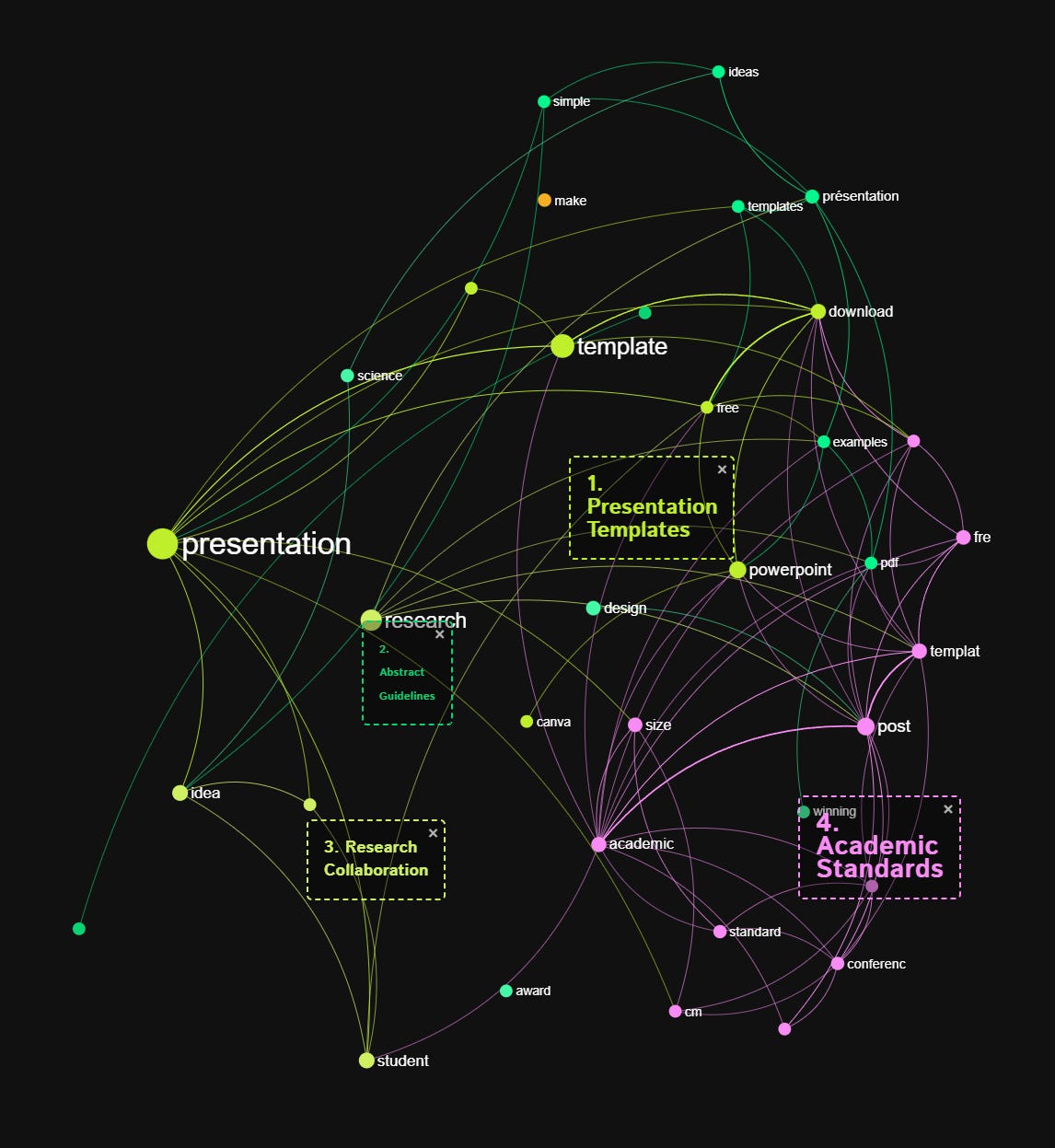
The visualization highlighted significant demand-supply gaps at the intersection of design feedback, community learning, and digital distribution.
These insights directly shaped PosterPal's key features: discipline-specific templates, peer feedback mechanisms, digital sharing capabilities, and community-building tools – all identified in minutes rather than weeks.
GraphRAG might be essential for mapping latent relationships between seemingly unrelated concepts – often where the most innovative ideas emerge. And I believe all ideators should integrate these into their stack.
Ideators will be governed by algorithms that utilize agents. But what will these systems of agents actually do?
The ecological engine
I believe the true power of ideators lies not just in their ability to generate ideas, but in how they nurture, test, and refine them through evolutionary processes. Think of it as a digital Galapagos Islands where only the fittest ideas survive.
The ideator's core operates on what I call an "ecological thinking framework" – a system where AI agents work in continuous loops to generate, test, refine, and rank business ideas based on principles found in nature. It’s inspired by the work of Dmitry Paranyushkin and his team from Nodus Labs.
Ecological thinking is important because it will not only help to provide a scaffolding for ideas to gestate and grow — it will also help to lower bias and short-sightedness of the ideas.
Here's what happens in the background while you sleep:
Multiple AI agents work in parallel, each with specialized functions – idea generators, critics, market analyzers, and refiners. They create a dynamic environment where ideas must prove their viability against business criteria including product feasibility, market potential, business model sustainability, and channel effectiveness.

The beauty of this approach is in its ruthless efficiency (hello Darwin! 🐦).
For every 1,000 ideas initially generated, perhaps only 10 make it through the gauntlet of testing. But those 10 have been shaped and hardened through dozens of iterations, emerging stronger and more viable with each cycle.
Output
The ideator we build will have integration with conversational coding tools like Cursor, Tempo, or Lovable that allows the system to actually implement and test the most feasible concepts in real time rather than just theorizing.
This combination creates a continuous loop where ideas aren't just generated but are actually built, tested, refined, and evolved without human bottlenecks.
Ideator output
Returning to our PosterPal example, let's explore what a fully developed ideator output might look like. While I haven't yet run thousands of business concepts through the complete ecological thinking framework (as the comprehensive ideator is still being developed), the components I've built so far give us a glimpse of the potential.
What makes the ideator approach transformative is how it would move beyond just generating the initial concept to producing functional mockups and prototypes for testing viability:
A complete ideator wouldn't just create static designs but would iteratively refine the concept based on simulated user interactions and feedback:
A fully implemented ideator system would process thousands of concepts through its evolutionary filters.
And ideas like PosterPal would emerge as promising candidates for development.
These concepts would then be transformed into testable prototypes, complete with supporting evidence for product-market fit, user value, and technical feasibility.
The human would remain the final judge, but your decision would be informed by concrete evidence rather than mere speculation.
I've built pieces of this system already, and while the complete, integrated ideator doesn't yet exist in its fully operational form, the early experiments with components of this approach show promising results.
The technological foundations are all available today – we just need to connect them in the right way.
The Future of Idea Abundance
We've entered an era where ideas are no longer scarce resources but abundant possibilities waiting to be harnessed. The notion that "ideas are worth $1" doesn't diminish their value – it reveals their true nature as seeds that, when systematically cultivated at scale, can grow into forests of invention.
Ideators represent a fundamental shift in our relationship with creativity itself, transforming us from idea generators to idea curators, from struggling artists to thoughtful gardeners selecting the most promising blooms from an ever-growing garden.
As these technologies mature, the competitive advantage won't come from having ideas – we'll all have access to thousands – but from developing the wisdom to recognize which ones deserve our limited human attention and execution capacity.
The future belongs not to those who can generate ideas, but to those who can identify which $1 ideas contain within them the DNA of something revolutionary. In this new landscape, the crucial skills become discernment, selection, and refinement – the uniquely human abilities to see potential where machines see only possibilities.
So the next time someone tells you ideas are worth just $1, smile and tell them: Perfect – I'll take a million. 😄
Keep on learning!
Jan ✨
I'm launching the Learner Mindset Community — a stimulating space for curious minds and free spirits to discover breakthrough ideas together. It's an extension of the thinking journey we've been sharing through my writing, but now in a more interactive, community-driven format.
If you've enjoyed the explorations of ideas in this newsletter, you might really resonate with this. The application takes just a few minutes, and it's designed to give you a taste of the unique energy of our community.
Looking forward to potentially thinking together in this new space!


